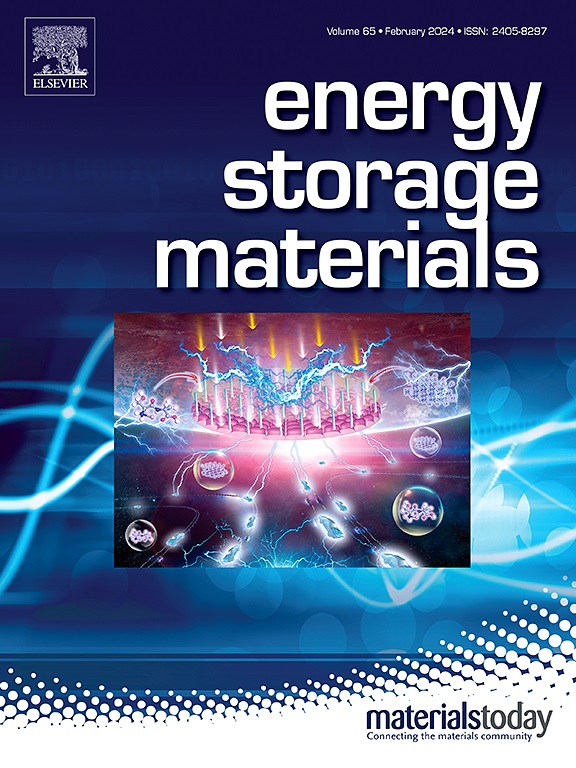Mechanistic insight into calendar aging of anode-less all-solid-state batteries
IF 18.9
1区 材料科学
Q1 CHEMISTRY, PHYSICAL
引用次数: 0
Abstract
Anode-less all-solid-state batteries (ASSBs) with thin interlayers have emerged as a promising solution capable of addressing the dendrite issues of Li metal anodes and considerably enhancing the energy density. However, only a few studies have investigated the calendar life of anode-free ASSBs. Herein, we reveal the degradation of an anode-less ASSB with a LiNi0.88Co0.09Al0.03O2 (NCA) cathode, a Li6PS5Cl (LPSCl) electrolyte, and an Ag-C interlayer during storage and provide mechanistic insights into the possible calendar aging process. The cell shows a decline in discharge capacity after long-term storage, depending on the storage conditions and, more importantly, exhibits the reduced capacity retention upon subsequent cycling. No microstructural and electrochemical degradation is observed on the anode side; however, the composite cathode stored at a high state of charge (SOC) suffers from severe degradation upon storage. In-depth chemical and structural analyses, coupled with impedance decoupling, reveal that the high-SOC storage facilitates the detrimental interfacial side reactions between NCA and LPSCl, which are accelerated at elevated temperatures. As a strategy to address this issue, we further demonstrate that increasing the external pressure to tens of MPa during storage facilitates the chemical lithiation of NCA, which can effectively alleviate the calendar aging of anode-less ASSBs.


求助全文
约1分钟内获得全文
求助全文
来源期刊

Energy Storage Materials
Materials Science-General Materials Science
CiteScore
33.00
自引率
5.90%
发文量
652
审稿时长
27 days
期刊介绍:
Energy Storage Materials is a global interdisciplinary journal dedicated to sharing scientific and technological advancements in materials and devices for advanced energy storage and related energy conversion, such as in metal-O2 batteries. The journal features comprehensive research articles, including full papers and short communications, as well as authoritative feature articles and reviews by leading experts in the field.
Energy Storage Materials covers a wide range of topics, including the synthesis, fabrication, structure, properties, performance, and technological applications of energy storage materials. Additionally, the journal explores strategies, policies, and developments in the field of energy storage materials and devices for sustainable energy.
Published papers are selected based on their scientific and technological significance, their ability to provide valuable new knowledge, and their relevance to the international research community.
 求助内容:
求助内容: 应助结果提醒方式:
应助结果提醒方式:


